The Best Wildlife Viewing in National Parks
On these expert-led trips, youŌĆÖll spot the National Park SystemŌĆÖs wildest residents, from mysterious wolves to fat bears. Pro tip: the bioluminescent fireflies are pretty cool, too.
New perk: Easily find new routes and hidden gems, upcoming running events, and more near you. Your weekly Local Running Newsletter has everything you need to lace up! .
Seeing animals is one of the most enriching parts of any national park experience, and there are countless ways to admire local fauna respectfully. Yet, as we learn year after year and , not everyone follows responsible wildlife travel rules. Like keep your distance, and never touch, feed, or harass an animal, to name a few.
One of the best ways to see the park systemŌĆÖs coolest critters safely? Join a guided tour. From research-driven safaris in Yellowstone to ranger-led birding trips in Big Bend, here are 11 of the top wildlife experiences in national parks. DonŌĆÖt forget to pack those binoculars.
Check Out the Bats
Carlsbad Caverns National Park
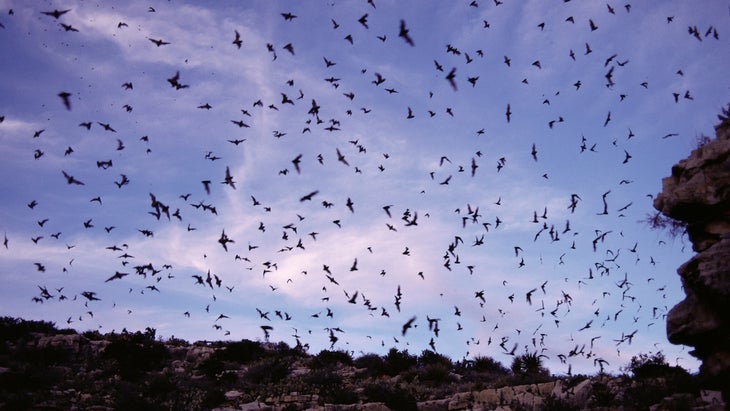
From late May through October, New MexicoŌĆÖs Carlsbad Caverns welcomes wildlife lovers with a unique national park night: the , where thousands of bats swarm the night sky. The free event begins in the evening, with ranger-led narration about the science behind the spectacle. During the program, visitors watch the parkŌĆÖs large colony of Brazilian free-tailed bats exit the caverns to hunt for insects. The event takes place in the Bat Flight Amphitheater near the parkŌĆÖs Natural Entrance. is $15.
Take a North American Safari
Yellowstone National Park
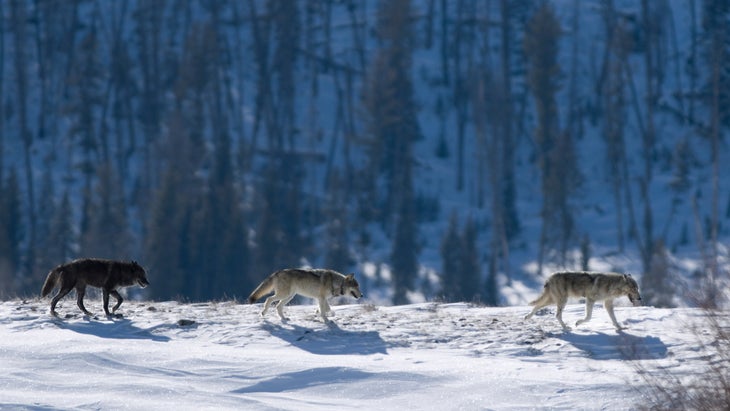
Come for world-renowned geysers, stay for the mind-blowing animal sightings. Yellowstone National Park has the lower 48 statesŌĆÖ largest concentration of mammals, including bighorn sheep, bison, moose, wolves, mountain lions, and grizzly bears. An expert-led summer or winter safari provides the best way to enjoy the parkŌĆÖs biodiverse flora and fauna, and you can help those tourism dollars go even further by booking a (from $710 a day) with an educator from Yellowstone Forever, the parkŌĆÖs nonprofit arm. Yellowstone Forever funds critical conservation projects, including the internationally acclaimed , a decades-old initiative to study and monitor the parkŌĆÖs wolf populations.
Join a Moosewatch Expedition
Isle Royale National Park
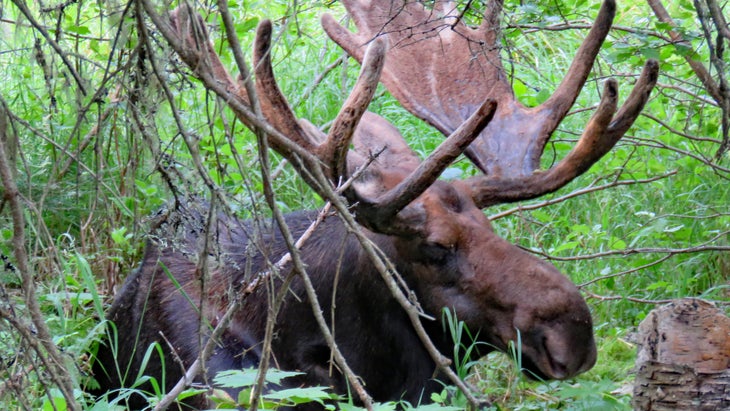
Few travelers experience the rugged beauty of Isle Royale National Park, the least-visited national park in the lower 48 states, and even fewer partake in its lesser-known wildlife program: . This citizen-science expedition sends intrepid, fit travelers up, down, and all around the Lake Superior island on the hunt for moose bones. ItŌĆÖs part of the parkŌĆÖs moose-wolf study, the worldŌĆÖs longest-running predator-prey study. Researchers have been studying the ebb-and-flow relationship between the islandŌĆÖs wolves and moose since 1958, and moose bones are critical. Bones help scientists reconstruct the moose population and understand how the environment affects the animals. YouŌĆÖll more than likely see live moose as well, but not wolvesŌĆöthe guides purposely try to avoid disturbing them. Moosewatch Expeditions run through the Isle Royale Institute. Expedition sign-ups open in late fall; the cost is a $450 tax-deductible donation, plus the fee of getting there (starts at , plus $7 per person).
Admire Synchronous Fireflies
Great Smoky Mountains National Park
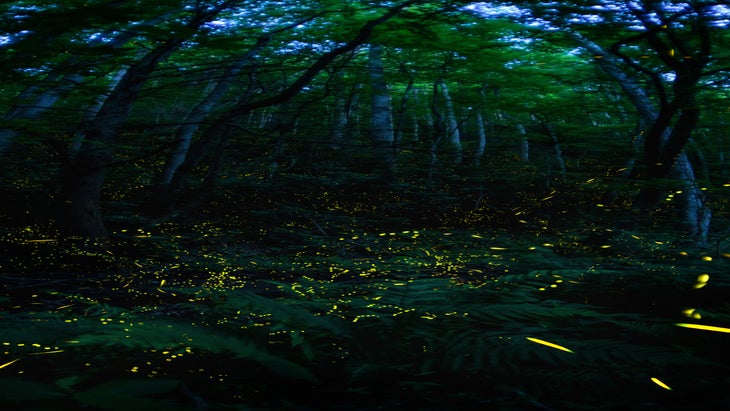
Sparkling fireflies are synonymous with summer, and Great Smoky Mountains National Park (GSMNP) has a lot of themŌĆöthink tens of thousands. In late spring, these bioluminescent fireflies twinkle in tandem during GSMNPŌĆÖs annual , which typically runs from late May to early June. The ticketed event draws thousands of nature enthusiasts to the evening shows; it takes place near Elkmont campground. Attendance is limited to minimize disturbance to the fireflies; passes are awarded via a lottery system, with a $1 lottery application fee and successful permits at $24.
Watch Fat Bears
Katmai National Park
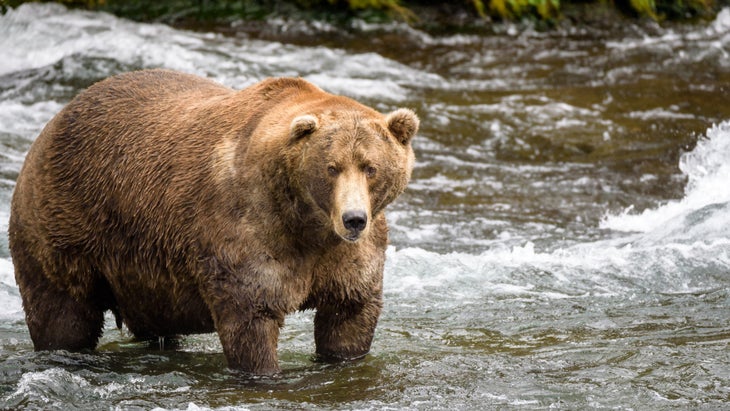
It wouldnŌĆÖt be an ║┌┴Ž│į╣Ž═° national-parks wildlife list without our beloved Fat Bear Week, the October competition thatŌĆÖs become the animal kingdomŌĆÖs . , home to thousands of brown bears, celebrates the behemoths as they beef up for winter hibernation. ItŌĆÖs an , where fans compare the bearsŌĆÖ physiques from early summer (at their skinniest) to post-salmon feasts (their plumpest), taking into account the animalŌĆÖs history and challenges of survival. To be clear, this isnŌĆÖt fat shaming. ItŌĆÖs encouragement. Fat is what keeps these brown bears healthy through the winter. For a firsthand experience, travel to Katmai and watch the revelry at , which has four viewing platforms along the river. The best bear viewing is in July and September, according to the National Park Service. The far flung park requires; no entrance fee is required.
Visit Alaska Bear Camp
Lake Clark National Park
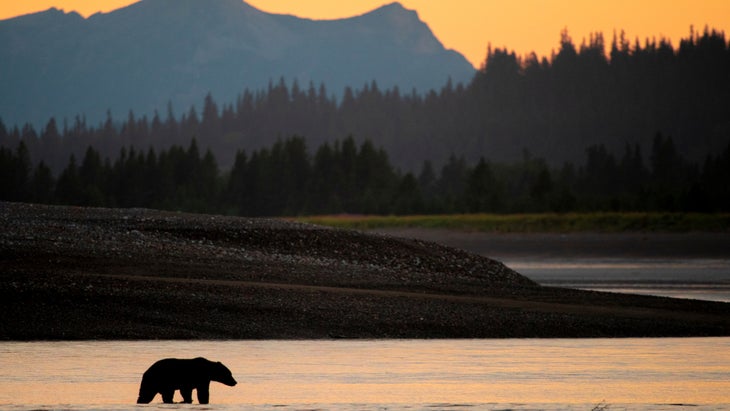
Craving a low-crowd bear adventure? Check out World Wildlife Fund partner Natural Habitat ║┌┴Ž│į╣Ž═°sŌĆÖ newest digs. In summer 2022, the ecotourism company debuted a new way to admire these beloved Alaskan animals: . Just getting to the camp, located on a private strip of land in far-flung Lake Clark National Park, is an adventure. It requires a bush plane across Cook Inlet before reaching the mountain-flanked and sustainable camp, where remote wildlife-viewing opportunities such as observation decks and naturalist-led walks await. The camp provides a critical economic incentive to protect this critical bear habit from the ever-present threats of mining. The property accommodates just 14 guests; trip prices start at $4,900 for five days.
Try Birding Texas-Style
Big Bend National Park
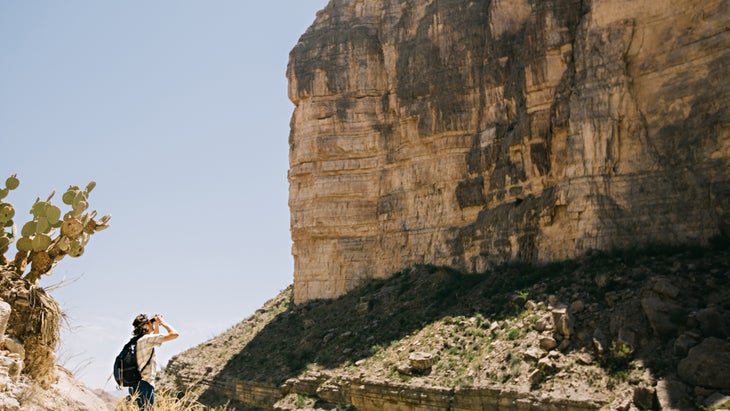
With more than , Big Bend National Park offers one of the countryŌĆÖs most celebrated birding locales. Some birds stay year-round, others migrate through the park, which marks the western migration limit for many eastern species, and the eastern limit for many western species, according to . The parkŌĆÖs far-south location also makes it ideal for spotting rare birds not seen in other states, such as the elusive Colima warbler. Join a to learn from the experts who know these birds best. For a DIY tour, use Visit Big BendŌĆÖs . is $30 per vehicle.
Dive to See Marine Life
Dry Tortugas National Park
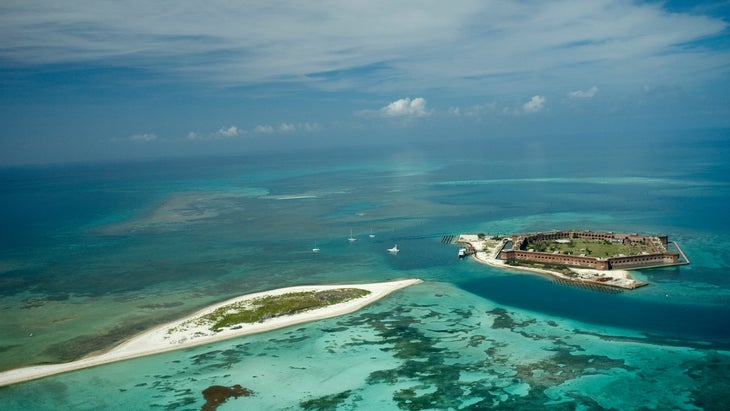
Less than one percent of Dry Tortugas National Park is dry ground, which means an underwater tour is a top way to experience this remote getaway. Dry Tortugas sits along the Florida KeysŌĆÖ reef system, with the perfect location for admiring the tropical regionŌĆÖs rich biodiversity. abound, but the Windjammer wreck, home to the 200-pound jewfish, is by far the most famous. has one of few permits for Dry Tortugas diving, with outings to the parkŌĆÖs Garden Key, Loggerhead Key, and Windjammer. Snorkel options are also available. two-tank dives start at $165, with private 10-hour Tortugas tours available for $2,700. Dry Tortugas entrance fee is $15 per person.
Spot Whales and Dolphins
Channel Islands National Park
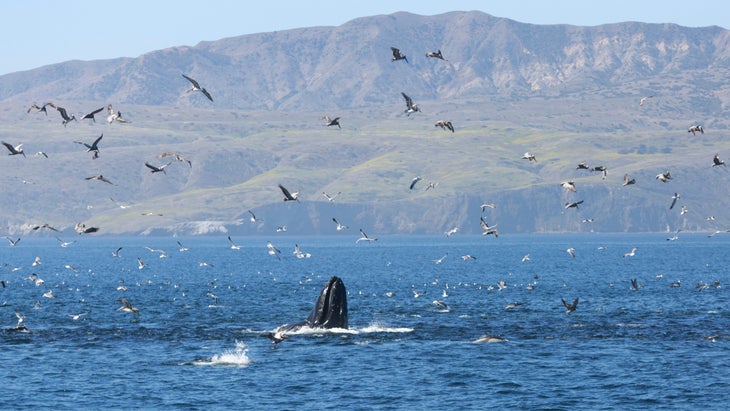
Getting to Channel Islands National Park via the Island Packers ferry is a whale-watching tour within itself. ThatŌĆÖs because the islands surrounding this southern California park are home to roughly one-third of the whale, dolphin, and porpoise species in the world. This includes , from humpback, orca, and blue whales to bottlenose dolphins and DallŌĆÖs porpoise. You can spot many of these majestic creatures on the trip across the Santa Barbara Channel from Ventura to the Channel Islands, or you can set out specifically to see these cetaceans with a fauna-focused cruise via park concessionaire Island Packers. The year-round run for $42 per person, which includes a 3.5-hour animal-focused excursion through the Santa Barbara Channel, Channel Islands National Marine Sanctuary, and Channel Islands National Park.
Snorkel with Sea Turtles
Virgin Islands National Park
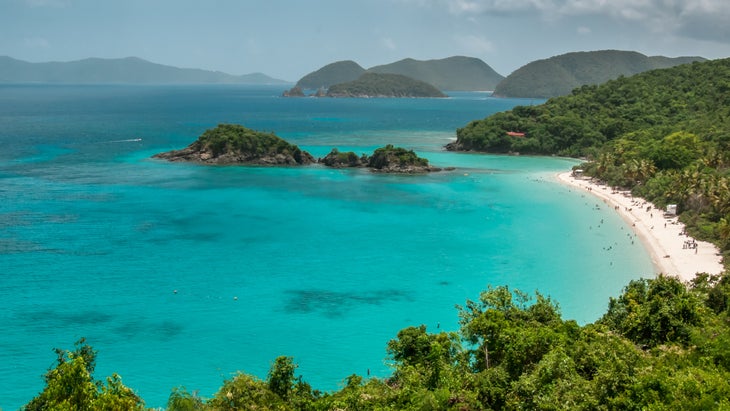
Sandy beaches, mangrove shorelines, and rich corals make Virgin Islands National Park a must-visit for nature lovers. It offers arguably the NPSŌĆÖ best snorkeling potential, with the chance to see sea turtles, corals, fish, and even octopus at Maho Bay on St. JohnŌĆÖs north shore. Woman-owned outfitter offers to Maho Beach alongside standup paddleboard or kayaking outings for $89 per person. Add on a VI Ecotours for land-based fun on St. John; trips start at $85. No park entrance fee is required.
Kayak Among Gators
Everglades National Park
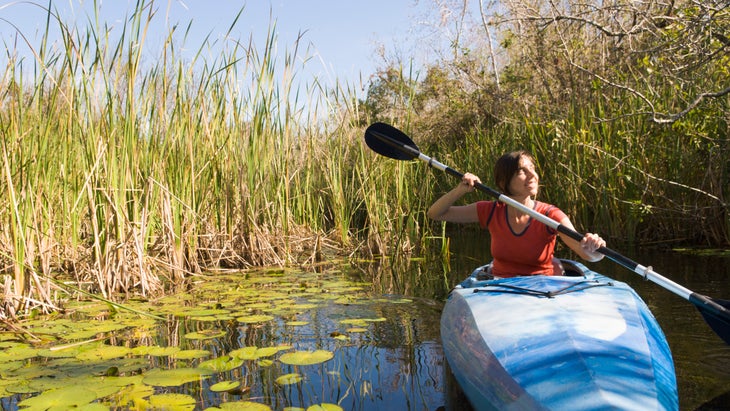
Paddle deep into FloridaŌĆÖs biodiverse Everglades National Park on an adventurous kayak tour. The park itself has , from hardwood hammocks to pinelands and mangroves. This dense flora attracts an array of fauna, including 360 different bird species from eagles to osprey, plus show-stoppers like the American alligator. , owned by former U.S. park ranger and trained naturalist Jennifer Walls, leads immersive and low-impact kayak tours through the mangroves, with bird and gator sightings along the way. Prices for start at $139 per person, with a limit of five guests.
EditorŌĆÖs note: As of press time, many regions in Florida are still recovering from the devastating effects of Hurricane Ian. Please check with the stateŌĆÖs local national parksŌĆÖ offices, including the and , about conditions before traveling there.
